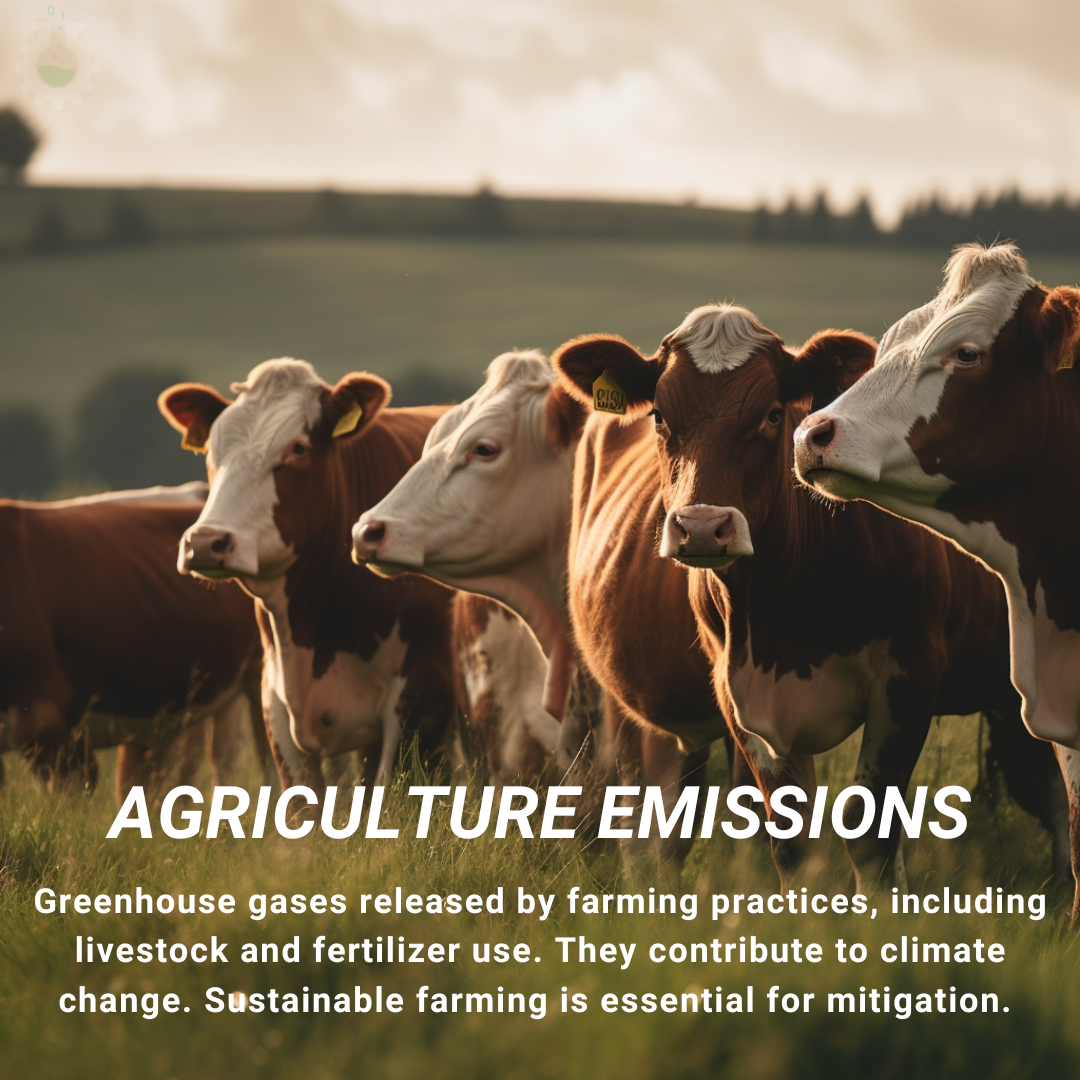October 9, 2023
Climate Change Poster Collection of the Day – Agriculture Emissions
Book a Demo
Today’s Climate Change Poster Collection highlights the Agriculture Emissions. The relationship between agriculture and climate change is a complex one, with the industry both contributing to greenhouse gas emissions and being significantly affected by the impacts of climate change. A closer examination of these complex interactions may offer potential solutions to mitigate emissions and adapt to changing climate conditions.
One example of this intricate relationship is the role of soil management in carbon dioxide emissions. The reduction of soil disturbances and increase in soil organic matter can help mitigate carbon dioxide emissions. This practice not only reduces the amount of carbon dioxide that is released into the atmosphere but also boosts storage in agricultural soils, serving as a carbon sink.
Another aspect to consider is the control of nitrous oxide emissions, a potent greenhouse gas. One way to achieve this is through nitrogen fertilizer application management. Research has shown that smaller, targeted applications of nitrogen fertilizer can be more effective, helping to reduce the amount of nitrous oxide released.
Livestock farming also contributes significantly to greenhouse gas emissions, particularly methane. This gas is primarily produced through ruminant digestion. However, the use of certain feed additives can decrease methane emissions. It’s important to note that while these additives can be effective, they may pose health risks to the animals and should be used judiciously.
Further, methane emissions from manure decomposition can be significantly lowered with the use of anaerobic digesters. These systems convert and capture the methane for energy use, reducing the overall emission of this potent greenhouse gas.
In New Zealand, agriculture accounts for almost half of the country’s greenhouse gas emissions, with methane from livestock digestion being the primary source. Meanwhile, in the United States, the agriculture industry contributes over $1.1 trillion to the nation’s GDP and is greatly affected by climate change. This impacts agricultural productivity, soil and water resources, and worker and livestock health.
Climate change could also have serious implications for food security. Indigenous peoples in Hawaii and other US-affiliated Pacific islands are particularly vulnerable due to the effects on key nutrition sources and culturally significant crops.
The impact of climate change on weather patterns and precipitation can have severe consequences for agriculture. For instance, the long-term drought experienced in the US Southwest since early 2020 presents significant challenges for the agriculture industry, which is highly sensitive to weather and climate changes.
The complex interplay between agriculture and climate change calls for comprehensive strategies to mitigate emissions and adapt to changing conditions. From soil management to livestock feeding practices, there are multiple avenues through which the agriculture industry can become more sustainable and resilient in the face of climate change.
Discover an inspiring collection of climate change posters.



